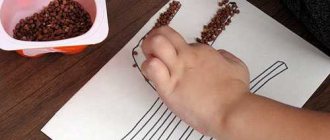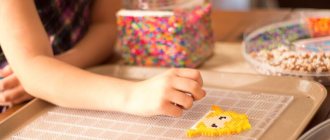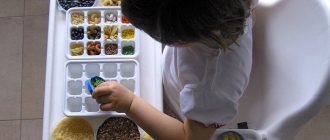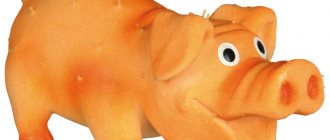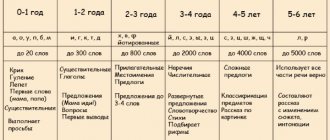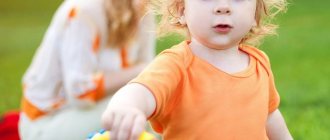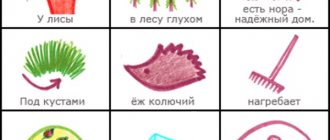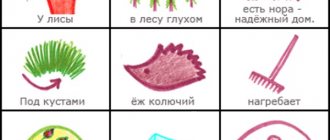The meaning of toys
Children begin to explore the world from birth. Toys help them with this. With the help of rattles, hearing and grasping movements are developed, pendants teach children to concentrate their gaze, and dolls teach children to understand the parts of the body. Do-it-yourself or store-bought toys for developing fine motor skills are essential for continued psychomotor, physical and speech development.
By going through mosaics and making puzzles, the baby trains not only the muscles of the fingers and hands, but also sends a signal to the brain. When playing with small objects, the frontal and temporal lobes of the brain are activated. They are responsible for speech.
The connection between these processes has been scientifically proven. Children's doctor Maria Montessori conducted classes with children with developmental delays who had difficulty adapting to society. Preschoolers learned games aimed at developing tactile sensitivity and self-care. The result exceeded all expectations. After 12 months, Montessori students improved their physical abilities, but also grew intellectually.
You need to train your fingers and palms in kindergarten and always at home. In games and activities, use sorters, educational mats, lacing, and puzzles. Make your own fine motor toys.
But, in general, the development calendar of the fine motor skills we are currently studying looks like this:
- From birth to 4 months: the baby reaches for objects, but squeezes toys, rather, at the level of a reflex. He cannot yet consciously grab a toy, and he also does not yet have a preference - with his right or left hand.
- From 4 to 12 months: can transfer a toy from one hand to another, turn the page of a book, pick up a bead with his fingers.
- 12-24 months: confidently “uses” fingers, especially the index finger. He tries to draw - he can already draw circles, the first lines, dots. At this age, right-handers and left-handers appear - the child chooses which hand is more convenient for drawing, eating, etc.
- 2-3 years old: the child is already quite capable of holding scissors and trying to cut paper. The drawing style gradually changes, and the drawn figures become more or less conscious.
- 3-4 years old. The child already draws consciously, holds the pencil confidently (although not always correctly), and is able to cut papers along a line drawn independently. By this time, the baby had already decided on his dominant hand, but in games he uses both of them.
Sorters
The purpose of the game with a developmental sorter is to teach the baby to think. The child has to include analysis, memory, knowledge about the color, shape, and size of objects.
The sorter is a platform of different types. This could be a house, columns, frames, cubes. Small objects are strung on them and placed inside through holes of various shapes. The child sorts the molds, putting them in the right places.
Sorters are intended for the development of fine motor skills of children from 6 months to 2-4 years. For children under one year old, these are simple platforms, for example, pyramids, musical pots with holes on the sides. Playing with a sorter requires infants and older children to perform precise actions. This is the only way to achieve the desired result.
Wooden sorting toys are popular today. They are safe and easy to make at home. You will need a small elongated board, sticks and elements of different shapes cut out of plywood. Color the triangles, squares, circles in different colors. Cut holes in them and your child will string them onto the platform.
Educational mats
Necessary for babies up to one year old. They are a canvas with many objects. The baby learns to roll over, reach for bells and mirrors, touch them, bite them, and pull them towards him. New tactile sensations develop the desire to explore the world, coordination of movements, and fine motor skills.
You don’t have to buy an educational mat; you can make it yourself from thick fabric and household items. Handmade, of course, will take a lot of time, but you will definitely be confident in the safety and environmental friendliness of the toy.
What is motor skills in children
Fine motor skills are usually understood as an element of the motor sphere, subtle precise movements of the hands and fingers. This type of motor skills includes a huge number of all kinds of movements - both simple gestures and complex movements for drawing or writing. It develops gradually, at each child’s own pace, but it is important for parents to help the child master the necessary skills in a timely manner.
Laces
These are book toys, cardboard figures or a set of objects that can be tied together with a cord. While playing, kids develop motor skills, logic, thinking, attention, and coordination.
Laces are made of cardboard and wood. Small holes are made in objects through which a thick thread is threaded. The order of action is not important at first. The main thing is that the child learns to put the lace into the hole, and then connect several objects on one thread.
DIY toys
Toys for developing and improving fine motor skills can be made from improvised means and unnecessary items at home.
Board
Busy board is an innovation among educational toys. It is a small piece of MDF, chipboard, with locks attached to them, dials from old telephones, bells, switches and other small parts that are interesting to touch and unscrew.
The stand for developing fine motor skills is so captivating for infants that they explore it for several hours a day.
Important! Do not attach sharp objects or glass fragments to the board. They can hurt the baby.
Soft cube
Suitable for babies from 6 months of age. It is sewn from pieces of multi-colored fabric and decorated with appliqués. You can embroider letters and numbers on them. Pyramids and houses are made from soft cubes; they can be thrown and crushed.
Soft books play the same role. They can be made from fabric, appliques in the form of fairy-tale characters.
Bags of cereals
Sew a fabric bag from a dense, pleasant-to-touch material. The size of the toy should correspond to the age of the baby. For one-year-old babies - 6x6 cm, for older children from 10 cm in width, 8-10 cm in length.
Sew it on three sides, leaving the fourth open. Fill the bag with any cereal: rice, buckwheat, beans. Fingering toys is a fun pastime for all kids.
Important! Periodically check the quality of the seams, make sure that the filler does not spill out and that beans do not get into the babies’ mouths.
Happy snake
Make a rope out of fabric, or sew the material together in several layers in the form of a sausage. Attach many buttons of different sizes, shapes, and textures to it with a thread. The kids sort them out, feel them, trying to pick them off. This is how hand strength and finger motor skills develop.
Knitted toys
Suitable for infants and children up to 3 years old. Mothers knit toys in the form of animals and dolls. You can put clothes on them, make eyes out of buttons for them. Use threads of different colors and textures. It is important for the baby to feel the heterogeneity of the material.
Books
This is a whole didactic complex. The number of pages depends on the imagination, patience and hard work of the parents. To create it you will need pieces of A4 size fabric, padding polyester, pieces of multi-colored material, buttons, zippers and everything you can find for creativity at home.
You can create entire compositions on the pages of the book to develop fine motor skills. For example, figures of animals, fish, on others - create landscapes, stick on applications of numbers and letters. Nothing limits mom's imagination.
It is important to understand the purpose of creating such a manual for the development of motor skills. Glue laces with beads, zippers, and ribbon loops onto the page of the book. You can use buttons and Velcro to unfasten elements so that the baby can attach them himself during play, developing motor skills and learning self-service at the same time.
Baby sling beads and bracelets for babies
These toys are more suitable for babies to chew and feel. You can’t always trust the assortment in stores; there is no guarantee of the safety of the products. And at home you can make them yourself using step-by-step instructions.
These are the earliest toys that look like beads or bracelets. Mothers often wear them to distract the baby while he is in a sling or in his arms.
Important! This will require crocheting skills. The ability to tie objects (bracelets, beads) and knit individual elements (animal figures, soft balls).
What you will need:
- wood beads;
- cotton threads;
- hooks;
- waxed cord/ribbon (base);
- filler (silicone fiber, cotton wool);
- rustling or any rattling objects (if necessary).
Operating procedure:
Decide in advance whether it will be a small bracelet, full-fledged beads or a biting toy. The base is a wooden object.
Bracelet - toy
Option 1. Take a small wooden ring and carefully tie it so that the knitted fabric covers the entire surface. In a similar way, tie a small wooden bead - the “head” of the toy. Separately tie a pair of ears to it, decorate the muzzle. When finished, connect the parts.
Option 2. Here wooden balls alternate with soft, knitted ones. You can tie several wooden balls - beads or tie balls, stuffing them with cotton wool/foam rubber. Let soft balls alternate with ordinary wooden ones in the bracelet. Connect them by using a thick, cotton thread.
Option 3. A bracelet with different balls is complemented by a pair of wooden rings.
Option 4. Bracelet - hippo. Tie a wooden base bracelet with cotton thread, just tighter and secure the ends. Tie the 4 legs and head of the hippopotamus separately. Fill them with cotton wool or other soft filler.
Option 5. Multi-colored knitted balls are collected together, with a figurine of a small hippopotamus. Tie each ball separately. You can use multi-colored threads to make the toy brighter. When collecting ready-made balls, alternate them with small beads. Sew a knitted animal figurine in the center.
INTERESTING: How to make a rattle with your own hands
Sling beads are made in a similar way, only they are larger. Mom wears such a practical aid for the baby, at the same time a distracting thing.
Such toys are also suitable for one-year-old children, 1-2, even 1-3 years old. Over time, you can complicate the structure of the beads or bracelet by explaining to your child exactly what elements it consists of.
